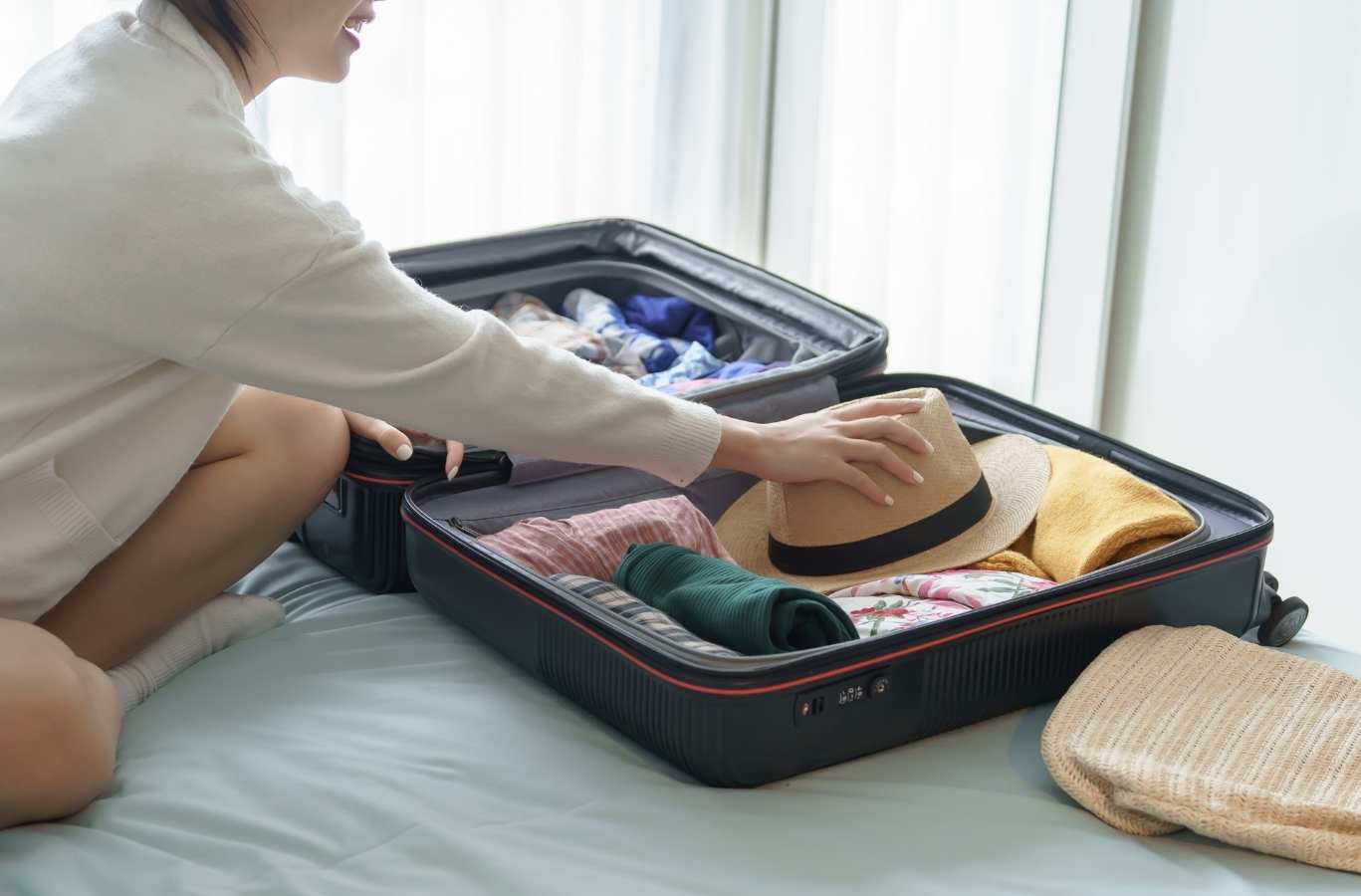What Is a Bill of Lading in Shipping? Complete Guide from Alemo Transport in Annapolis, MD

When you arrange a move through a professional moving company like Alemo Transport, you will receive several important documents. One of the most critical documents you will encounter is the bill of lading. Understanding what a bill of lading is, what information it contains, and how it protects you during your relocation is essential knowledge for anyone moving within the Greater DMV Area or beyond. This comprehensive guide explains everything you need to know about bills of lading in the context of residential and commercial moves.
Defining the Bill of Lading
A bill of lading, commonly abbreviated as BOL or B/L, is a legal document issued by a carrier to a shipper acknowledging that specified goods have been received onboard for transport to a named destination. The term derives from the verb "to lade," which means to load cargo onto a vehicle, ship, or other form of transportation. In the context of residential moves, your bill of lading is the contract between you and your moving company, detailing all the terms, conditions, and specifics of your relocation.
By federal law, moving companies are required to prepare a bill of lading for every shipment they transport. This legal requirement ensures consistency, transparency, and protection for both the moving company and the customer. The bill of lading is issued before the moving company begins loading your belongings onto their truck. It is your responsibility as the customer to review, understand, and sign the bill of lading, confirming that all information is accurate.
The Three Main Functions of a Bill of Lading
Understanding the multiple roles a bill of lading serves helps you appreciate its importance in your moving process.
Evidence of a Contract of Carriage
The bill of lading serves as proof that a legal contract exists between you, the shipper, and the moving company, the carrier. It documents the agreement between both parties regarding how your belongings will be transported. The document outlines the terms of service, including pickup and delivery dates, payment methods, pricing, and any special handling instructions or services. The bill of lading specifies what services are included in your move and what additional services might incur extra charges. This contractual function protects both you and the moving company by creating a clear, written record of what was promised and what was delivered.
Receipt of Goods
When the bill of lading is signed by the carrier, it serves as a receipt confirming that the moving company has received your household goods in the condition noted on the document. This receipt function is similar to receiving a receipt when you make a purchase at a store. The receipt acknowledges that the carrier has accepted responsibility for your belongings and has loaded them onto the moving truck. You should receive a copy of the bill of lading before the movers begin loading, allowing you to verify that the goods listed match what is being transported. When the driver signs the bill of lading, this signature confirms that the items specified have been accepted for transport.
Document of Legal Title and Ownership
Perhaps the most important function of the bill of lading is its role as a document of legal title. The bill of lading proves ownership of the goods being transported. As the original holder of the bill of lading, you retain ownership of your belongings throughout the moving process. The bill of lading essentially says, "These goods belong to the person holding this document." This title function becomes especially important if disputes arise regarding the shipment or if the goods need to be claimed at the destination. The document of title function also has financial and legal implications, as it may be used as collateral or proof of ownership in various transactions.
Critical Information Included on a Bill of Lading
Your bill of lading contains numerous details about your move and your possessions. Understanding what information appears on this document helps you verify accuracy and catch any errors before signing.
Shipper and Consignee Information
The bill of lading includes the full name, address, and contact information for the shipper, which is you, the person initiating the move. It also contains the complete name, address, and contact information for the consignee, which is the person or organization receiving the shipment at the destination. Both of these addresses must be correct, as they determine where your belongings are picked up and where they will be delivered. Double-check these addresses carefully, particularly if you are moving to a new address in the Annapolis area or have recently changed your contact information.
Carrier Information
The bill of lading lists the name and address of the moving company that is transporting your belongings. If multiple carriers are involved in your move, such as in a long-distance relocation, the information for each company should be included. Vehicle identification numbers for any trucks that will be used to transport your goods appear on the bill of lading. This information helps you track your shipment and ensures you know which vehicle contains your belongings.
Pickup and Delivery Details
The date and time of pickup and the estimated date and time of delivery are documented on the bill of lading. These dates are important because they establish the timeframe for your move. If delays occur, the bill of lading provides reference points for understanding what was promised versus what actually happened. The pickup date and time tell you when the movers will arrive to load your belongings, while the delivery date and time indicate when you can expect your items to arrive at your new location.
Complete Inventory List
One of the most detailed sections of the bill of lading is the inventory list. This comprehensive list documents every piece of furniture, box, and major item that is being moved. If you’re preparing your boxes, it helps to learn how to pack clothes for moving efficiently so your wardrobe items stay organized and protected during transport. The inventory is typically organized by room or category to make it easier to track items. Each item is assigned a number for reference and tracking purposes. During unpacking, you can verify that each numbered item on the bill of lading actually arrives at your new home. Any items listed on the bill of lading that do not arrive should be noted and reported to the moving company.
Condition Notations
The bill of lading notes the condition of items as they are loaded onto the moving truck. This documentation is critical for damage claims. To avoid damage altogether, it’s worth reviewing proper techniques on how to pack glasses and fragile items for moving before your moving day. If an item is damaged before the move begins, the driver should note this on the bill of lading. For example, if a chair already has a scratch or stain, the driver will make a notation indicating the pre-existing damage. This notation protects the moving company from being held responsible for damage that occurred before they handled the item. Conversely, if items arrive at your destination damaged and there is no pre-existing damage notation on the bill of lading, you have grounds for a damage claim.
Payment Terms and Final Charges
The bill of lading specifies the method of payment expected for your move and lists all charges associated with the relocation. This includes the base moving cost, any additional services you requested, fuel charges, and any other fees. The final total price of your move should be clearly stated. Payment terms indicate whether payment is due upon pickup, upon delivery, or at some other specified time. Understanding all charges before signing the bill of lading prevents surprises when it is time to pay.
Special Instructions and Services
Any special instructions or services you have requested should be documented on the bill of lading. These might include requests for careful handling of fragile items, particular placement of furniture at the destination, specific unpacking services, or other special accommodations. Storage requirements, if applicable, should also be noted. These special instructions ensure that the moving company understands your preferences and can fulfill the services you are paying for.
Types of Bills of Lading
Different moving situations may require different types of bills of lading. Understanding these variations helps you recognize which type applies to your move.
Straight Bill of Lading
A straight bill of lading is used when the cost of the move has been paid in advance by the shipper. This is a non-negotiable bill of lading, meaning it specifies a particular recipient and cannot be transferred to another party. With a straight bill of lading, the moving company delivers the goods to the specified recipient, and ownership transfers directly to that recipient upon delivery. Most residential moves in the Greater DMV Area use straight bills of lading because customers typically pay moving companies before or immediately after delivery.
Order Bill of Lading
An order bill of lading is used when goods are being shipped before full payment has been received. This type of bill of lading is marked with "to order of" followed by the recipient's name. An order bill of lading is considered a negotiable instrument, meaning it can be transferred from one party to another. The document essentially serves as a substitute for money or as a promise to pay. Order bills of lading are common in international commerce and complex business transactions but less common in residential moving situations. However, if you are coordinating a move for a business entity or a complicated commercial relocation, you may encounter an order bill of lading.
Bearer Bill of Lading
A bearer bill of lading is one where ownership of the goods transfers to whoever holds the bill of lading. This type is less common in modern commerce and even less common in residential moving situations. However, understanding this category of bill of lading helps you appreciate the different ways ownership and responsibility can be transferred.
Why You Should Never Sign a Bill of Lading Without Reading It
One of the most critical mistakes customers make during the moving process is failing to carefully read and verify the bill of lading before signing. This document is a binding legal agreement, and your signature indicates that you accept all terms and conditions listed.
Verify All Information
Before signing, carefully check every detail on the bill of lading. Confirm that your name and address are spelled correctly and completely. Verify that your new address is accurately listed. Review the moving company's information to ensure you are working with the correct carrier. Check the pickup and delivery dates and times to confirm they match what was promised.
Confirm Inventory Accuracy
Compare the inventory list on the bill of lading with the items you are actually having moved. Walk through your home with the driver and verify that all major pieces of furniture and boxes are accounted for on the list. If you have specific valuable items, ensure they are noted on the bill of lading. For example, delicate or high-value accessories should be handled with care — you can review our detailed tips on how to pack jewelry for moving safely to minimize risk during transport. If the inventory seems incomplete or inaccurate, point out the discrepancies to the driver before signing. Getting the inventory right before the move prevents disputes later about what should have been transported.
Check Condition Notations
Review all condition notations carefully. If the driver notes that an item is scratched, dented, or damaged, this is important documentation. Ask the driver to explain any notations you do not understand. If you disagree with a condition notation, discuss it with the driver before signing. The condition notations on the bill of lading serve as your baseline for assessing damage claims, so accuracy is essential.
Understand All Charges
Review all charges listed on the bill of lading. Confirm that the total price matches your estimate or any binding agreement you signed with the moving company. Ask questions about any charges you do not recognize or understand. If charges have increased from your initial quote without explanation, address this before signing. Understanding all costs before the move prevents disputes about payment later.
Ask Questions
If anything on the bill of lading is unclear or confusing, ask the driver to explain it before you sign. The bill of lading is a legal document, and you have the right to understand all its terms before agreeing to them. Professional moving companies like Alemo Transport are happy to answer questions and clarify details. Never sign a bill of lading if you have unanswered questions or concerns.
Your Rights and Responsibilities Regarding the Bill of Lading
As a customer, you have specific rights and responsibilities related to the bill of lading.
Your Rights
You have the right to receive a copy of the bill of lading before the moving company begins loading your belongings. You have the right to review this document carefully and ask questions about any information it contains. You have the right to refuse to sign the bill of lading if you believe the information is inaccurate or if you do not understand all the terms. You have the right to request corrections or amendments to the bill of lading before signing. You have the right to keep a copy of the signed bill of lading for your records, and the moving company is required to provide this to you.
Your Responsibilities
It is your responsibility to read the bill of lading completely before signing it. You are responsible for carefully verifying all information, including your address, the inventory list, and all charges. You are responsible for noting any pre-existing damage to your items by pointing it out to the driver before loading begins. You must understand that signing the bill of lading is your acknowledgment that the information is accurate and complete. You are responsible for keeping the bill of lading in a safe place throughout your move. You are responsible for referencing the bill of lading if you need to file damage claims or address delivery issues.
The Bill of Lading and Damage Claims
If any of your belongings are damaged during the move, the bill of lading is your essential document for filing a damage claim with the moving company.
Documentation Value
The condition notations made on the bill of lading at pickup serve as the baseline for your damage claim. If an item arrives damaged and there is no pre-existing damage notation for that item on the bill of lading, the moving company is liable for the damage. The bill of lading proves what condition items were in when the moving company accepted them for transport. This documentation is crucial for proving that damage occurred during the move and not before.
Filing Claims
When filing a damage claim, you will need to provide the bill of lading as evidence. The document shows what items were transported and their condition at pickup. You will also need to document the damage with photographs and provide written descriptions of the damage. The moving company will use the bill of lading to verify which items were transported and will compare the condition notations made at pickup to your damage claim. Federal regulations require moving companies to respond to damage claims within a specified timeframe. Having your signed bill of lading readily available helps expedite this process.
Frequently Asked Questions
1. What should I do if I notice errors on the bill of lading before signing it?
If you notice any errors or inaccuracies on the bill of lading before signing, you should immediately notify the driver. Point out the specific errors and ask that corrections be made. Do not sign the bill of lading until all errors have been corrected to your satisfaction. The driver can make amendments or issue a corrected bill of lading. Many drivers carry computers or tablets that allow them to update information in real-time. If corrections cannot be made electronically, the driver should write corrections by hand and initial them, and you should do the same. Getting errors corrected before you sign prevents disputes later and ensures the moving company has accurate information about your move. Once you sign the bill of lading, it becomes a legal contract, so accuracy is essential.
2. Can I refuse to sign the bill of lading?
Yes, you have the right to refuse to sign the bill of lading if you believe the information is inaccurate or incomplete. However, the moving company cannot proceed with loading your belongings until you sign the bill of lading. If there are disputes about what should be on the bill of lading, contact Alemo Transport directly to resolve the issues. In most cases, working with the driver and moving company representative to address your concerns results in a bill of lading you are comfortable signing. Refusing to sign typically delays your move and may result in additional charges, so it is best to work cooperatively with the moving company to resolve any issues.
3. Should I keep my bill of lading after my move is complete?
Yes, absolutely. You should keep your signed bill of lading indefinitely, even after your move is complete and all charges have been paid. This document serves as proof of what was transported, the condition items were in at pickup, and all terms and charges related to your move. If damage claims arise after your move, the bill of lading provides essential documentation. If disputes arise regarding your move or any items that were transported, the bill of lading is your key evidence. Many people store their bills of lading with other important moving documents or in a file folder with other household records. Keeping the bill of lading safe and organized ensures you have it available if you ever need to reference it.
The bill of lading is far more than just another piece of paper in your moving documentation. It is a legal contract, a receipt for your belongings, and proof of ownership that protects you throughout your moving process. Taking time to carefully read, understand, and verify all information on your bill of lading before signing ensures a smooth move and provides you with essential documentation for your records. By understanding what a bill of lading is and what it contains, you are better prepared to manage your move effectively and protect your interests.
For professional moving services in the Greater DMV Area including Annapolis, Maryland, contact Alemo Transport at 240-968-6717 or alemotransport@gmail.com. Our experienced team is happy to explain all moving documentation, including your bill of lading, and answer any questions you may have about your upcoming relocation. Let Alemo Transport help make your move smooth, transparent, and worry-free.

.avif)

.png)
%20(1)%20(1).png)








